Intellectual Property Initiatives
Management
With the innovation in information and communication technologies in recent years, next-generation industries such as AI, IoT, and big data are gaining momentum, while economic globalization and industry transformation are also accelerating. Given this situation of increasingly fierce global competition to produce innovation, companies need to pursue cutting-edge intellectual property initiatives in order to improve their international competitiveness.
Intellectual property is an intangible asset created through the intellectual creativity of people, and it cannot be monopolized in a visible manner. If it cannot be protected in some manner, there is a risk that it will be easily stolen or copied by others. When investing large sums into research to complete an invention, only to see it stolen away, the whole point of the investment is lost, and there is a risk that investment could decline, resulting in a decrease in new technology development.
Since its founding, Casio has worked to develop innovative new technologies and products that are completely original and have never existed before. Casio recognizes that it must protect these development outcomes by obtaining intellectual property rights to ensure its corporate competitiveness. Meanwhile, the company also promotes the value of the Casio brand and Casio design as visual assets by securing intellectual property rights and protecting them as well, which serves to increase brand value.
As a result, Casio’s technical and business divisions work together in line with its management strategy on intellectual property initiatives. Casio actively pursues intellectual property application rights for priority technology areas and newly developed products and services aimed at the future, and utilizes these rights to protect intellectual property globally in key countries. These efforts are designed to protect Casio’s business and contribute to corporate profits.
Policy
Casio engages actively in intellectual property efforts based on strategies it has developed under the slogan, “A frontline offense on intellectual property.” Casio establishes these strategies from a medium-to long-term perspective based on close cooperation with those on the frontlines of research and development, design, marketing, and other functions. Moreover, by coordinating its strategies for intellectual property, management, and business, Casio seeks to create value for the future as it strives to deliver continually growing corporate value.
Basic Policy on Intellectual Property Strategy
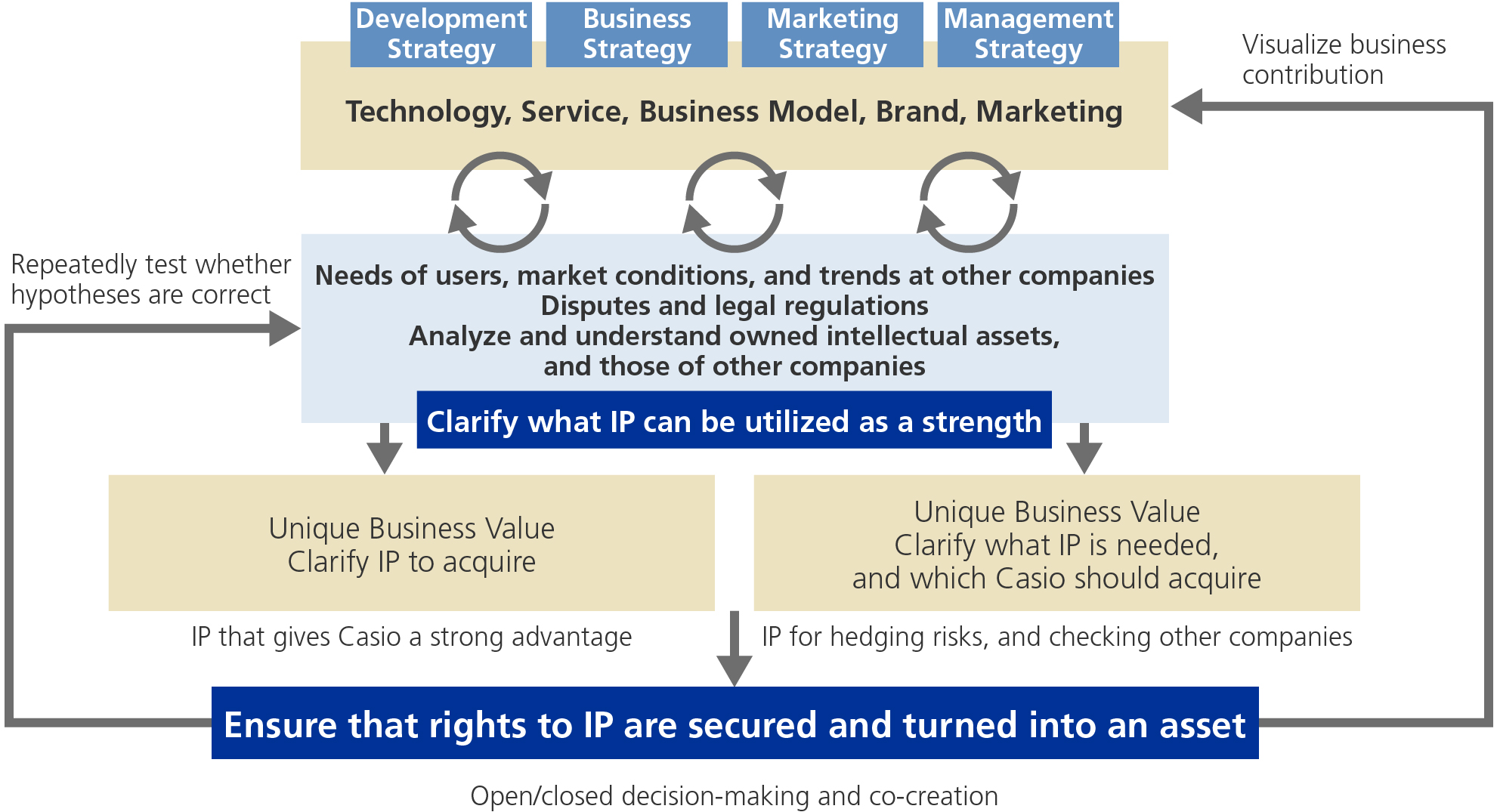
System
The Intellectual Property Unit is located within the Development Headquarters. While collaborating closely with relevant departments on a daily basis, the Intellectual Property Unit is working to maximize the value and promote the effective utilization of intellectual property created by Casio during the research and development process and during business activities in general. Casio is also working to construct a governance system that will support group-wide investment decisions, asset management, and valuation systems.
Governance System Related to Intellectual Property
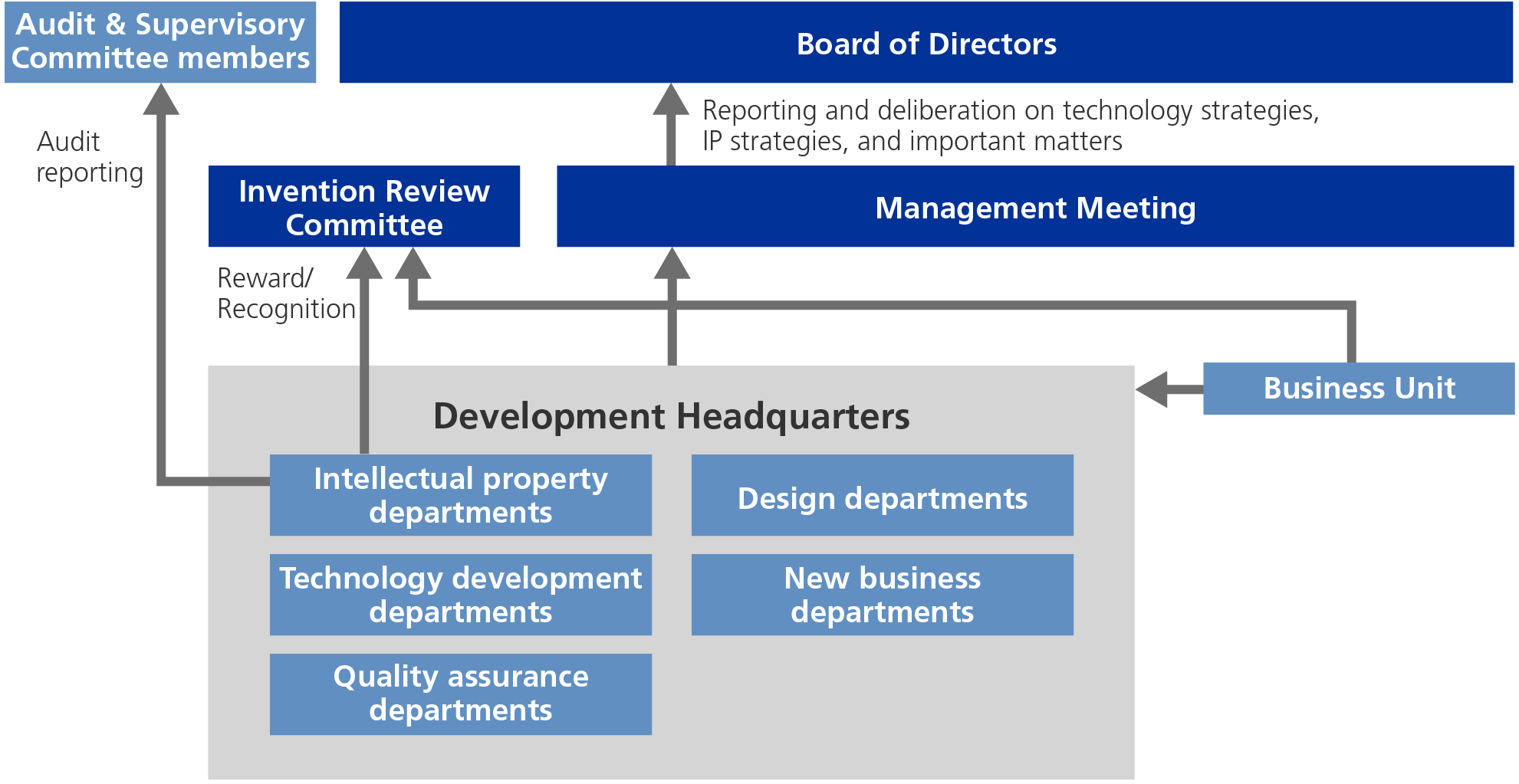
Activity Results
Casio implements various intellectual property activities. Casio actively utilizes the intellectual property that it has accumulated over the years, and carries out activities to protect its businesses. The company conducts ongoing R&D necessary for sustained growth, and has put in place various systems for producing new intellectual property.
1. Acquisition and utilization of patents, designs, and trademarks
Casio is actively working to build its IP portfolio by leveraging intellectual property strategy and analysis. For patents in particular, Casio analyzes and evaluates the patents it holds for each technology, establishes goals, and then augments portfolio.
In addition to securing intellectual property rights, Casio works to ensure freedom of operations by preventing legal claims from other companies and earns profits by licensing its technologies to other companies (including cross licensing). The company also uses intellectual property as a barrier to deter other companies from entering the same business, and carries out activities to establish competitive advantage for corporate management.
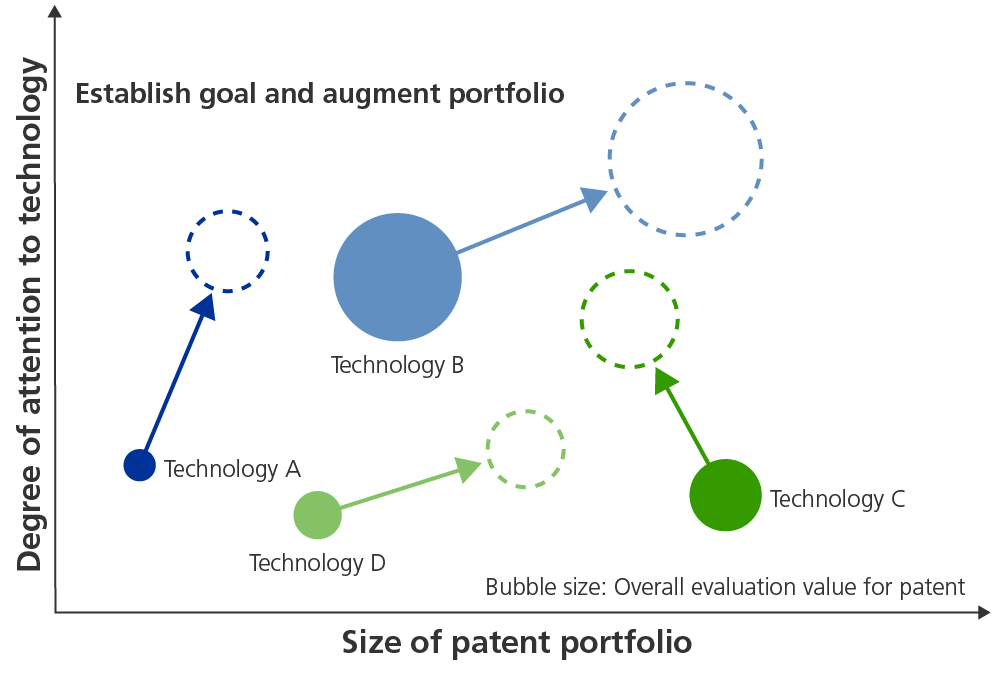
Patent portfolio (As of March 31, 2023)
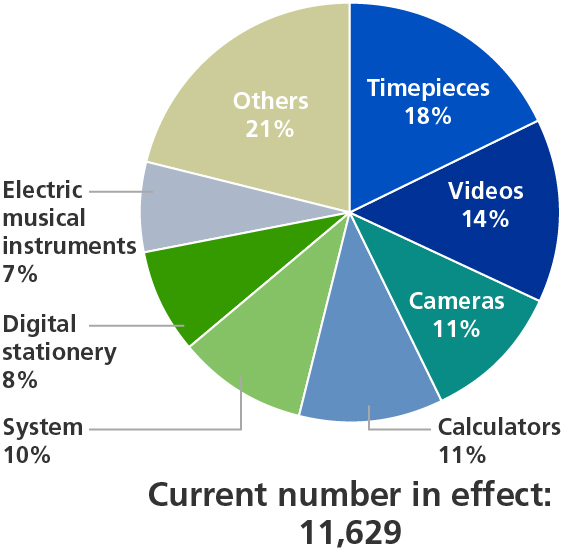
By product type
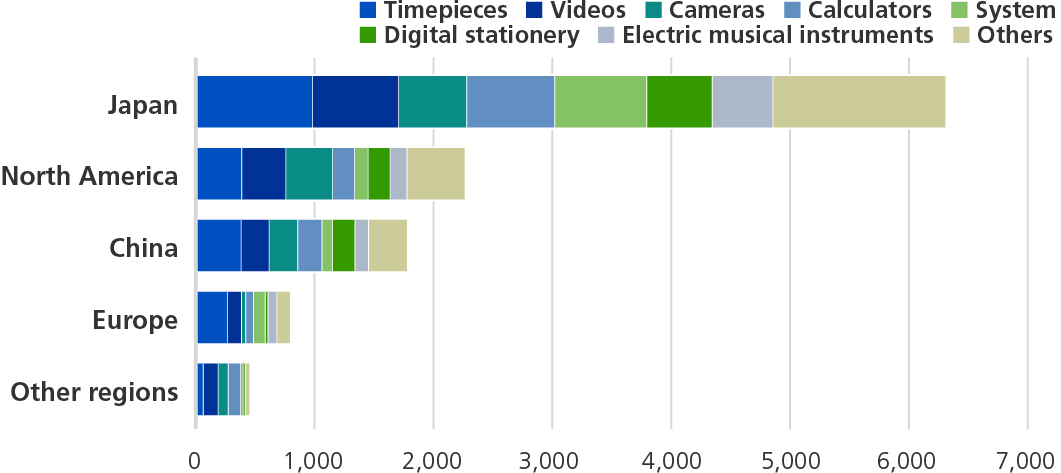
By region/country
Design rights acquisition (as of March 31, 2023)
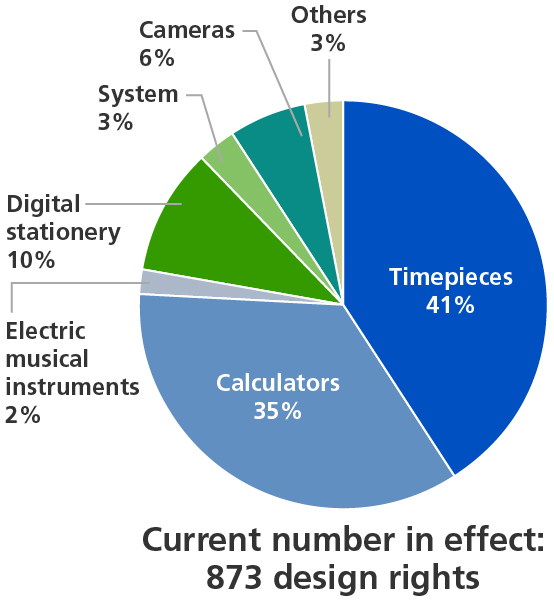
By product type
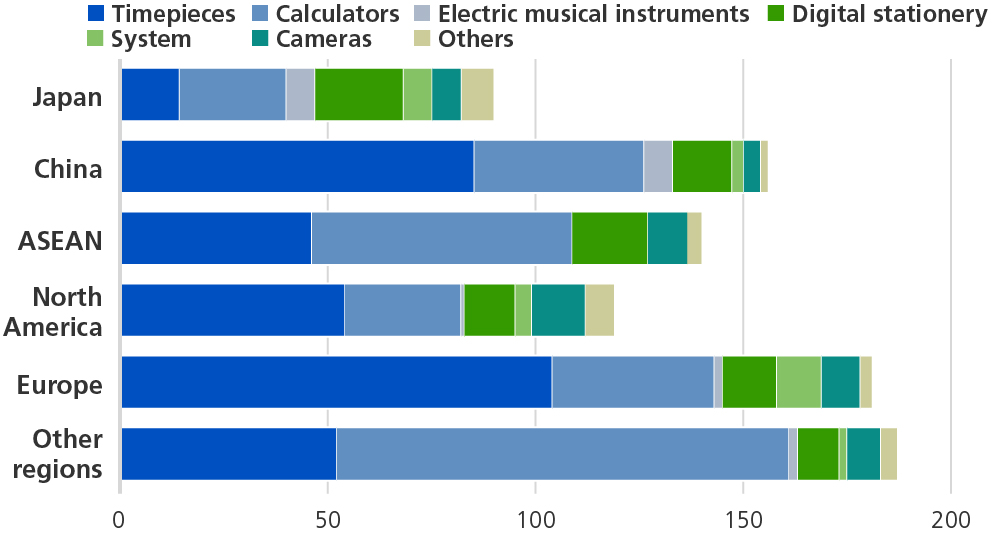
By region/country
Trademark rights acquisition (as of March 31, 2023)
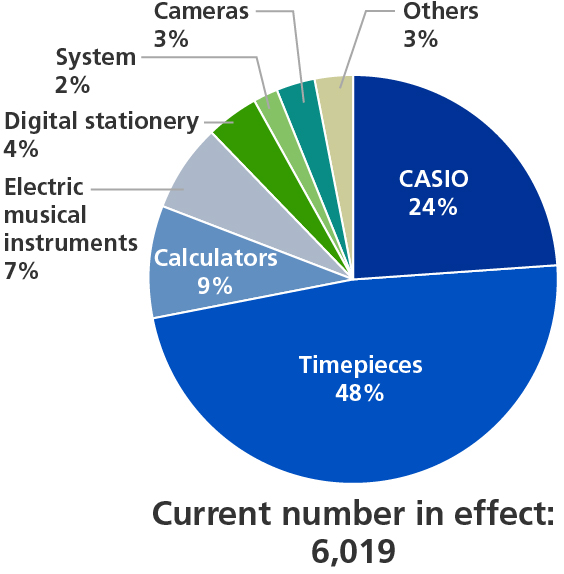
By product type
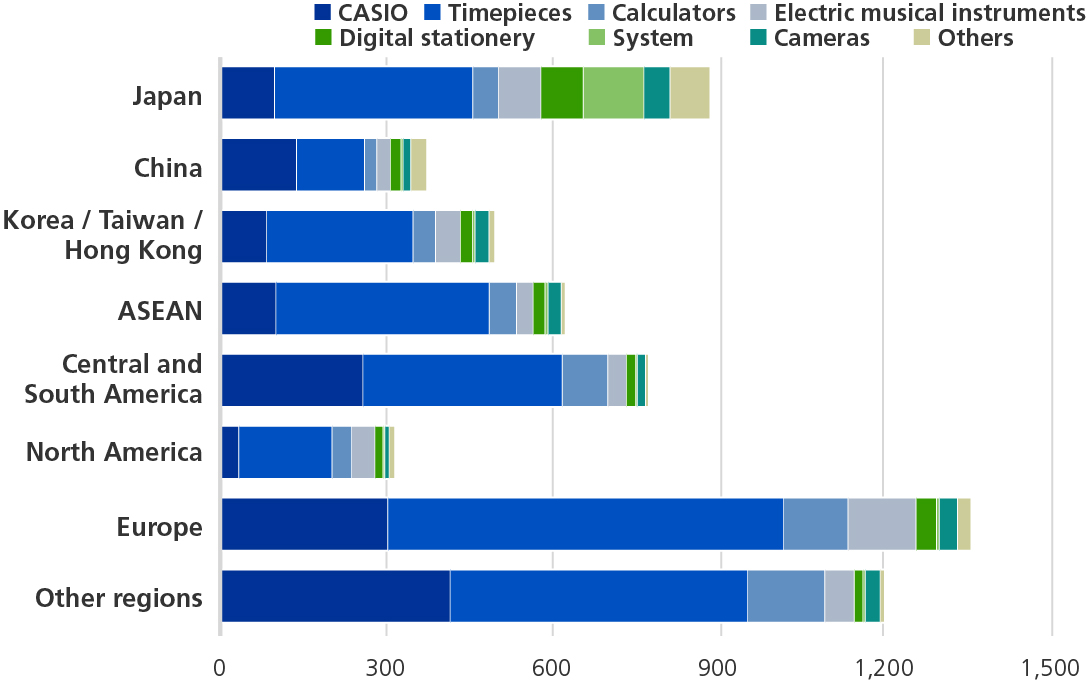
By region/country
2. Utilizing intellectual property rights for brand management
Protecting rights to the Casio brand
In order to promote smooth corporate operations on a global level, Casio has obtained 1,427 registered trademarks in 192 countries around the world, most of which are product trademarks, in order to protect the Casio brand. To further strengthen protection of rights to the Casio trademark, the company has been seeking official recognition of the Casio mark as a well-known trademark in various countries. This type of certification has already been obtained in several emerging countries.
In recent years there have been more trademark applications by other companies—mainly in emerging economies such as China and India—which try to mimic the well-known Casio brand. As a result Casio has been strengthening its monitoring activities and its efforts to prevent the trademarking of look-alike brands.
Trademarking of the Casio Brand (as of March 31, 2023)
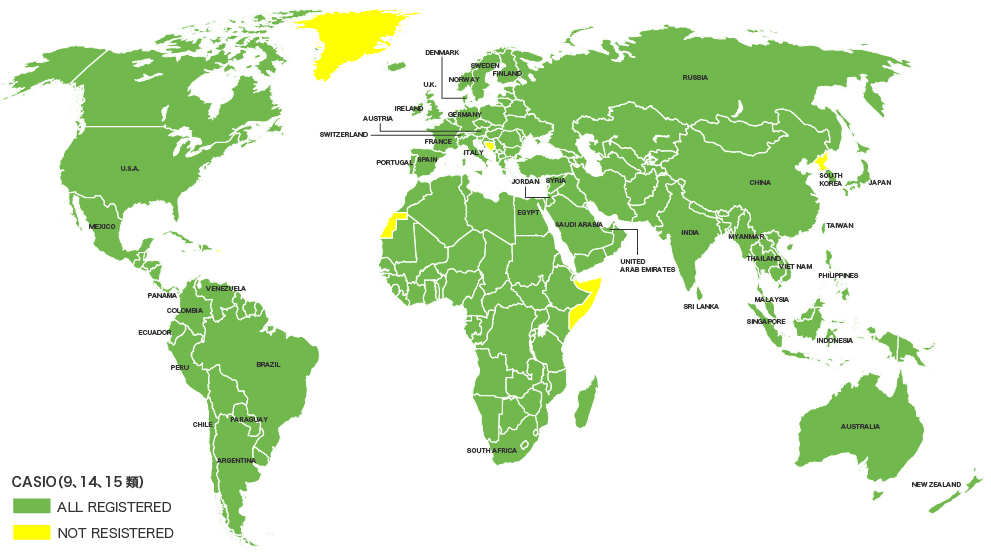
Casio has registered the Casio brand for trademarks for main products in the countries indicated in green. In the countries indicated in yellow, Casio trademarks have not yet been registered due to various reasons. These reasons include delays in trademark examination in some fields, lack of a trademark registration system, or applications not being accepted due to the politician situation.
G-SHOCK Branding
The advent of G-SHOCK created the entirely new value of toughness for wristwatches at a time when they were still just a fragile tool to tell time. Even now, 40 years after the first G-SHOCK came out, Casio continues to add to the number of patents it holds on technologies related to shock resistance, waterproofing, and power consumption, all of which support “toughness.” Today, G-SHOCK watches continue to evolve.
Eventually, G-SHOCK watches developed into a way for people to express themselves, bringing even more new unique value to the wristwatch market leveraging youth fashion. In 1997, G-SHOCK reached a peak in shipment volume, and Casio focused on registration of trademarks and design rights with an awareness of their role as countermeasures against counterfeits. Since then, as globalization has advanced, Casio has secured multifaceted rights to brand elements that reflect the brand identity (G-SHOCK uniqueness) to support various objectives, including promotional initiatives such as the Shock The World events. As Casio has made the most of its intellectual property mix to differentiate its products and create barriers to entry, intellectual property rights have played an important role in the growth of G-SHOCK into a global brand.
Number of Patents Related to G-SHOCK Toughness
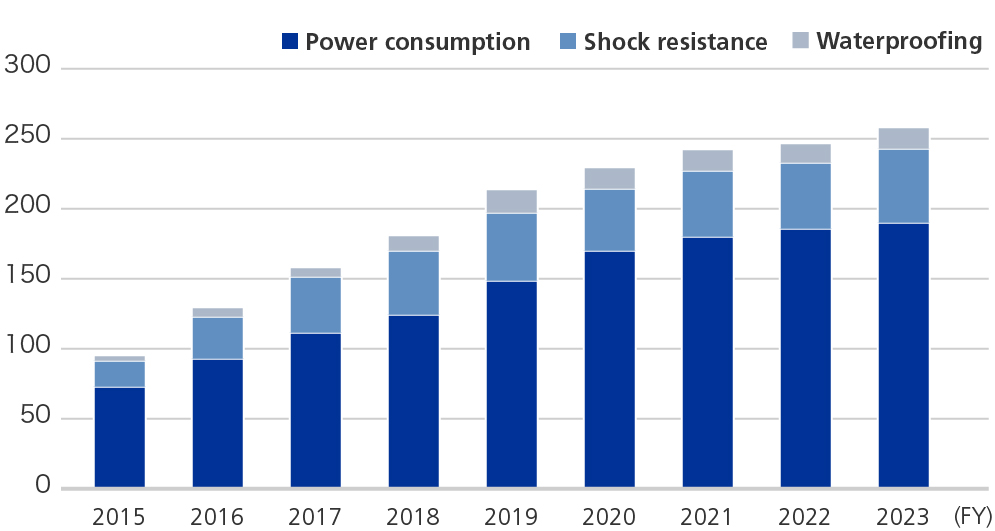
Number of G-SHOCKs Shipped Annually and Number of Related Patent Applications
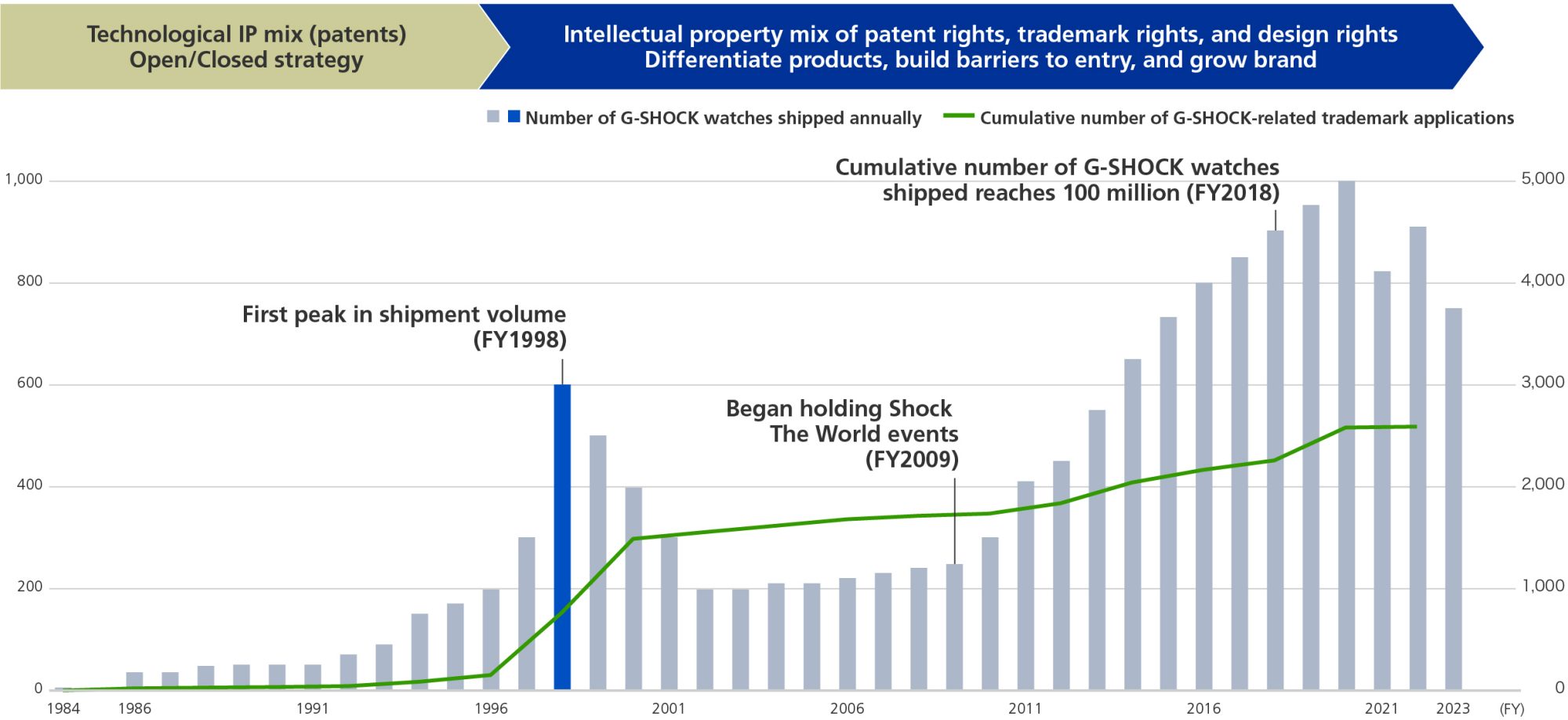
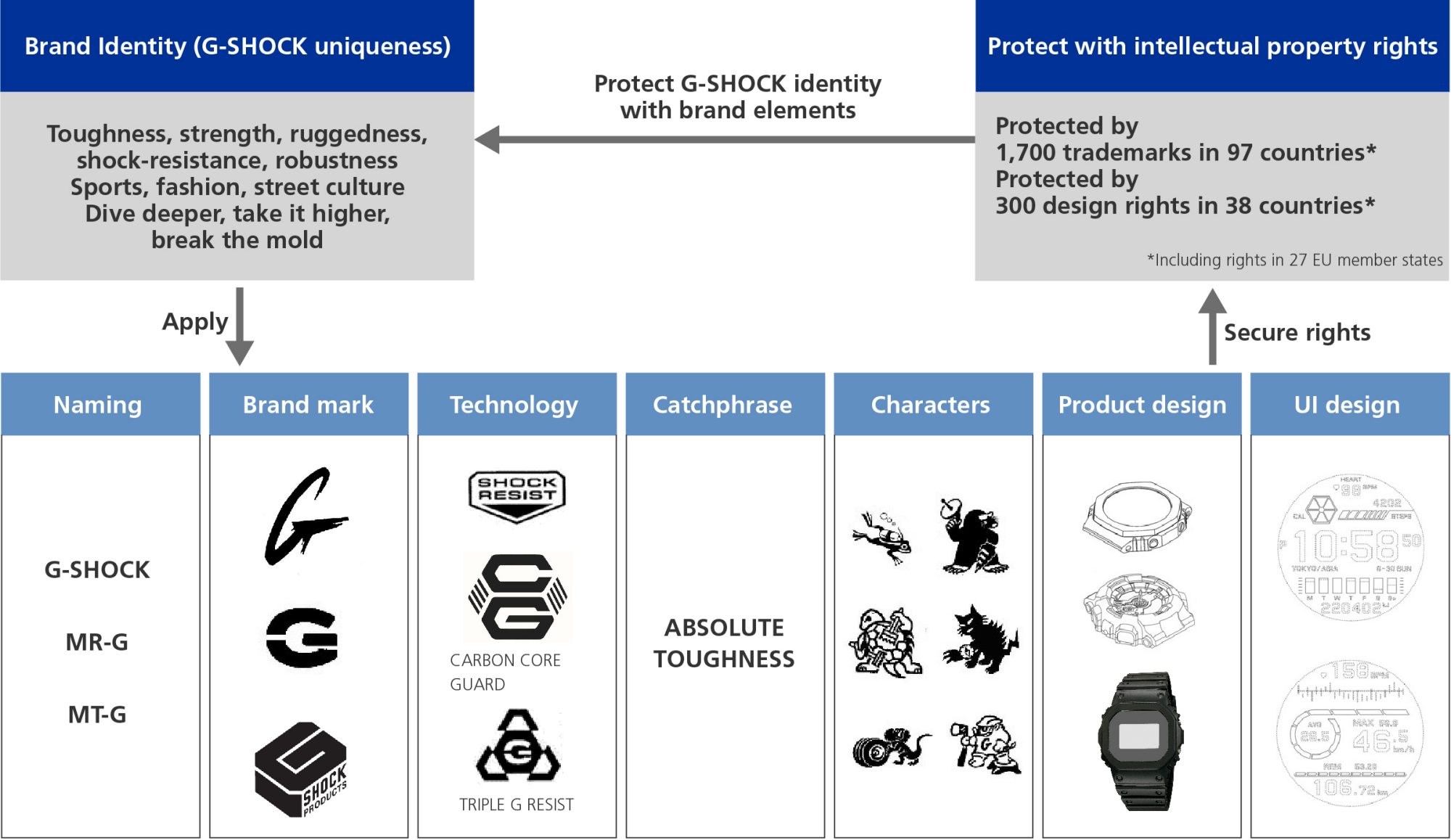
Visualizing Brand Value by Obtaining a Three-Dimensional Trademark
The shape of the original G-SHOCK model is registered as a three-dimensional trademark based on shape alone. Casio has been able to semi-permanently monopolize this shape, allowing it to protect a wide array of products that use it, regardless of their color or material. This is the first time that the shape of a wristwatch itself, without logos or characters, has been so registered. This was widely reported by media outlets, helping G-SHOCK to gain even further recognition. Going forward, Casio will continue to take on the challenge of acquiring various trademark rights in tandem with its business strategies, always striving to increase the brand value of G-SHOCK, which is a driver of growth for Casio.
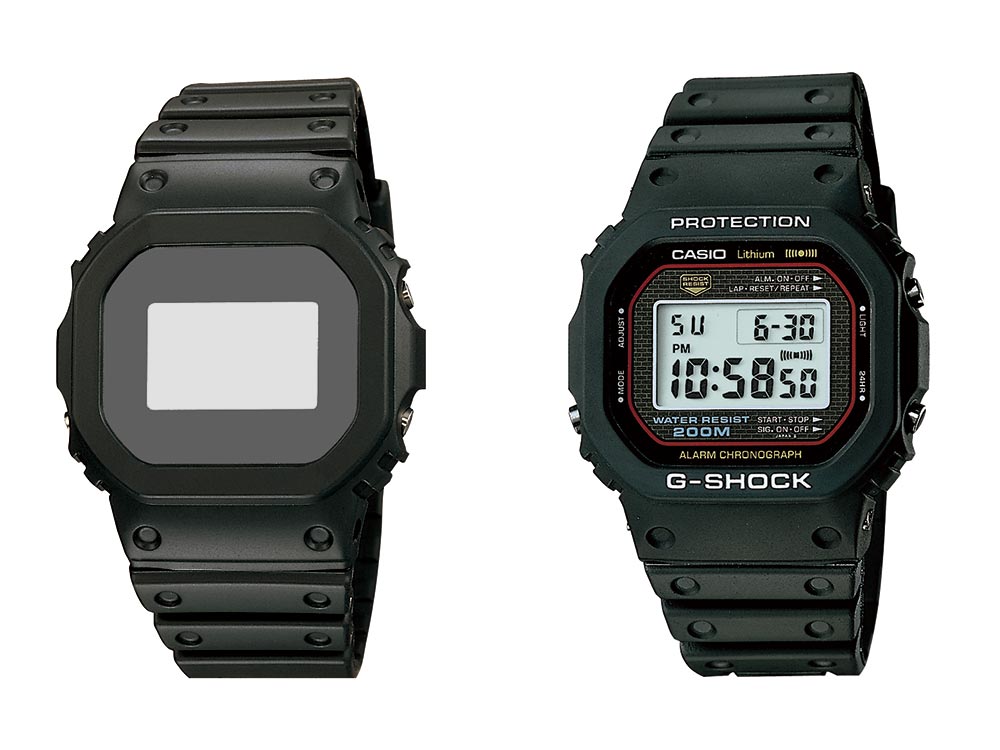
Risk Management Designed to Eliminate Brand Damage
Casio is striving to eliminate damage to the brands of Casio products and services using multifaceted risk management. Amid a diversification in customer touch points, Casio avoids the risk of infringing upon the design or trademark rights of other companies by conducting IP clearance surveys in collaboration with its product planning and marketing departments at an early stage. At the same time, Casio focuses on ensuring the proper application of trademarks and countering efforts such as infringement applications by others.
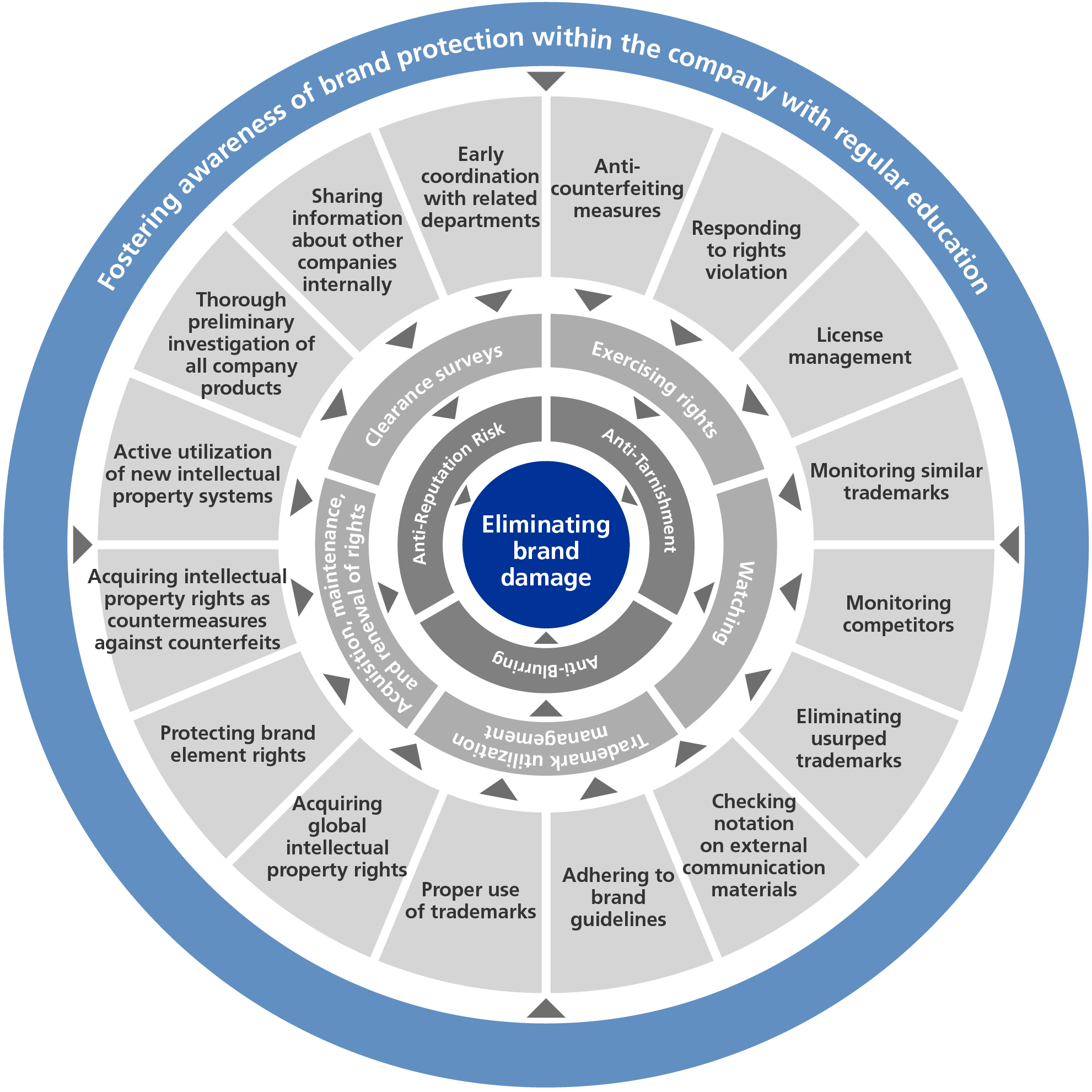
Counterfeit product removal and consumer protection activities
The development of information and communications technology in recent years has facilitated the extensive spread of counterfeit goods on the Internet. Casio products are no exception to the damage caused by counterfeits. In order to guard consumers from the damage of counterfeits and to protect the Casio brand and increase its value, Casio has established a department tasked with counterfeit countermeasures and is taking action to get counterfeits off the market. Casio will continue to actively cooperate with efforts by government authorities to eliminate the damage caused by counterfeits by exposing factories that make counterfeit goods and agents that sell counterfeit goods, intercepting counterfeits at customs, monitoring and eliminating counterfeits sold on the Internet, and pursuing lawsuits against agents that sell counterfeit goods.
3. Patent expert system
Casio initiated a patent expert system in 1994 in order to promote the ongoing creation of outstanding intellectual property. With the aim of business strengthening through stronger intellectual property, engineers with high-level understanding of technologies and leadership skills have been assigned to each business and technology field as patent experts. While cooperating with the Intellectual Property Unit from an engineer perspective, these patent experts work to strengthen the intellectual property abilities of their respective organizations.
Here are details of specific activities.
- Sharing technology and development trends at Casio and other companies with the Intellectual Property Unit
- Discovering and updating inventions
- Evaluation of patent applications, determination of direction for patent creation according to business strategy, as well as evaluation of patent maintenance
- Surveys of patents at other companies, patent infringement avoidance, and patent risk management
4. Invention award system
Since 1968, Casio has had an award system for those employees that contribute to inventions and designs. By increasing the incentive for inventors and designers, the system fosters the desire for in-house engineers to take on the challenge of discovering new technologies. In accordance with Article 35 (Inventions by Employees) of Japan's revised Patent Act, which took effect in April 2005, Casio has revised its environment for employee inventors. It updated its intellectual property rules and created a consultation process in which the employee inventors can voice opinions in the revision of the rules. It also implemented a system for employee inventors to file complaints regarding monetary reward amounts. Additionally, Article 35 (Inventions by Employees) of Japan’s revised Patent Act, which is intended to resolve instability in the attribution of rights to inventions by employees, took effect in April 2016. Accordingly, Casio updated its rules specifying that the attribution of the right to receive patents originally goes to the employer (Company), in order to resolve such problems as “procedures for joint inventions made with employees of other companies” and “double transfer of inventions by employees.”
In October 2020, with the objective of incentivizing the development of technologies that contribute to the business, as well as the creation of inventions and designs, Casio reviewed its award assessment standards and revised its regulations, creating an award system that delivers increased incentives for inventors and designers. Casio will continue to revise its regulations in the future in accordance with the changing times and environment, while taking into consideration requests from inventors and designers, as well. Based on this award system, the Intellectual Property Unit works to properly evaluate intellectual property results and to recognize and reward outstanding engineers and designers.
5. Intellectual property training system
Casio offers various types of intellectual property education to deepen employee understanding and interest in intellectual property. These include holding intellectual property seminars, using its internal portal site to distribute relevant information (through intellectual property portal site content), and making use of material from outside educational organizations such as the Japan Intellectual Property Association and the Japan Institute of Invention and Innovation. Casio remains committed to taking a variety of educational measures in the future to improve literacy regarding intellectual property rights.